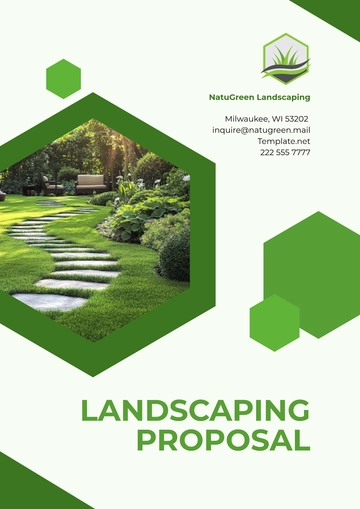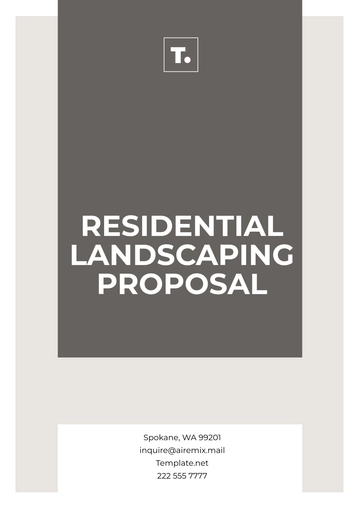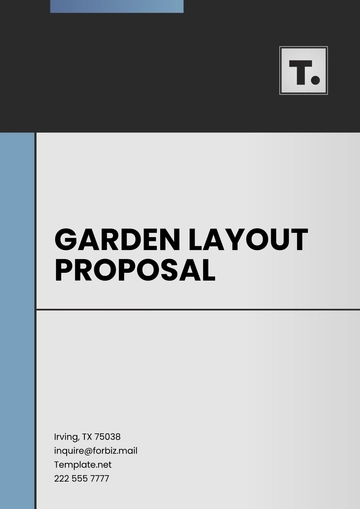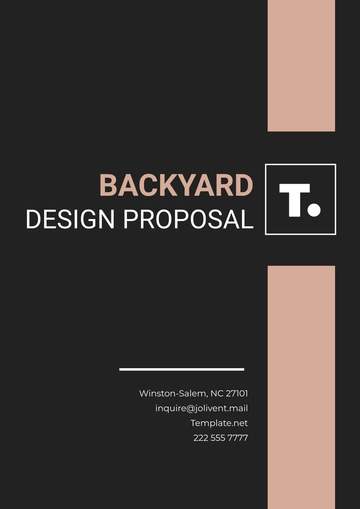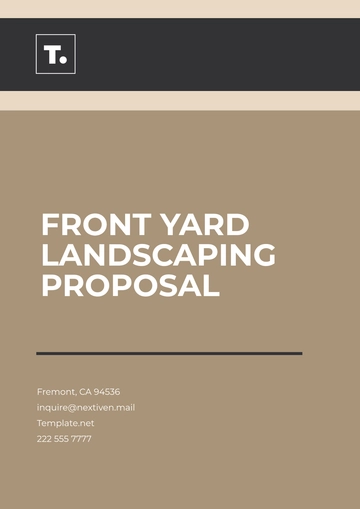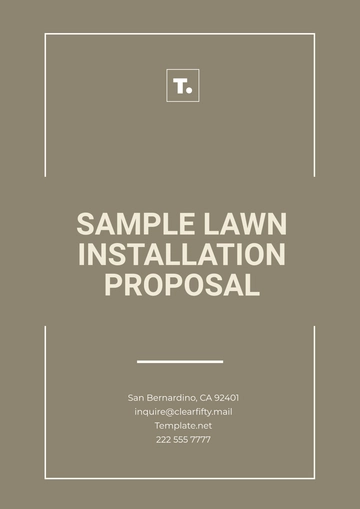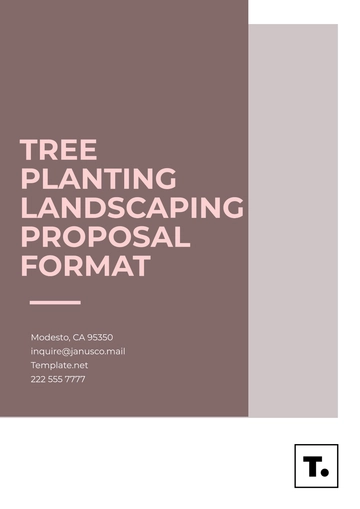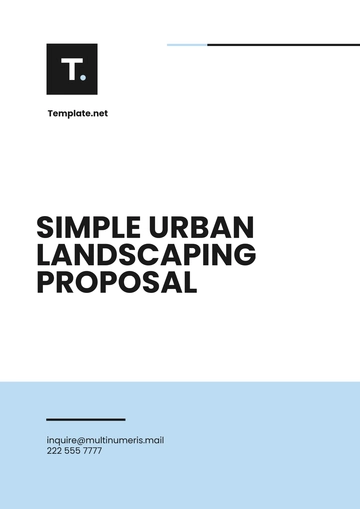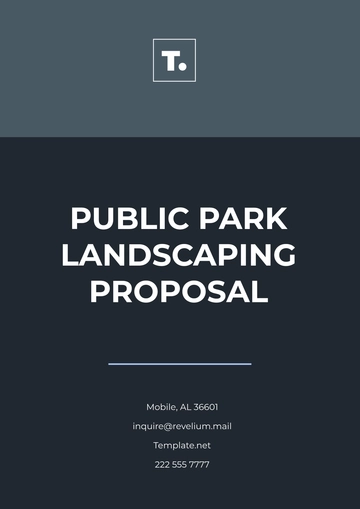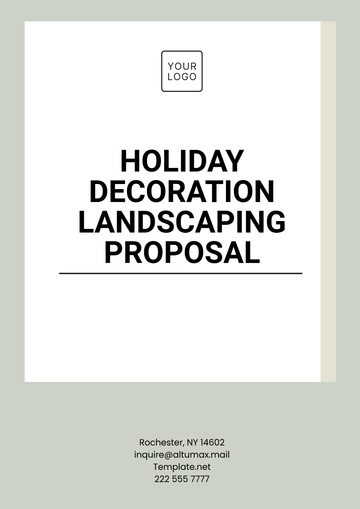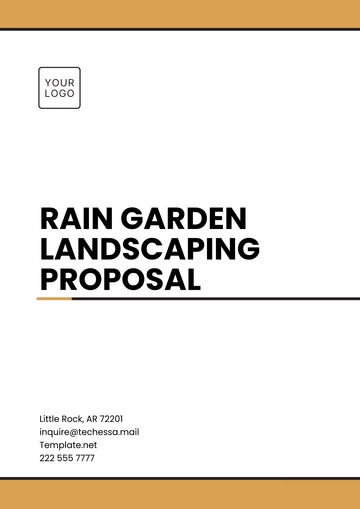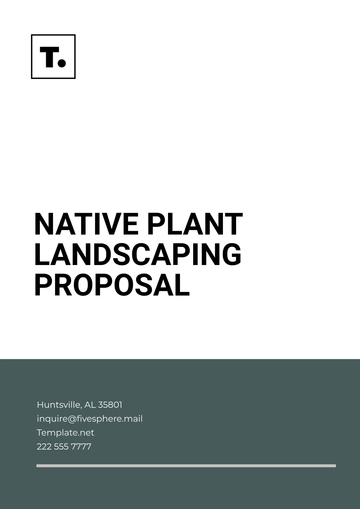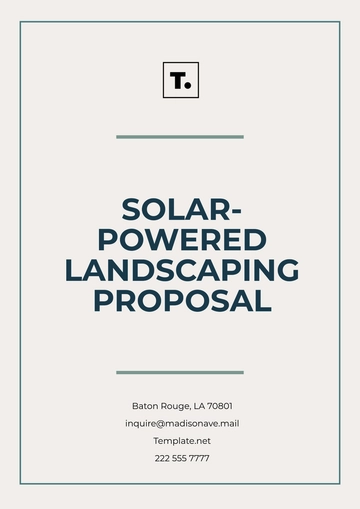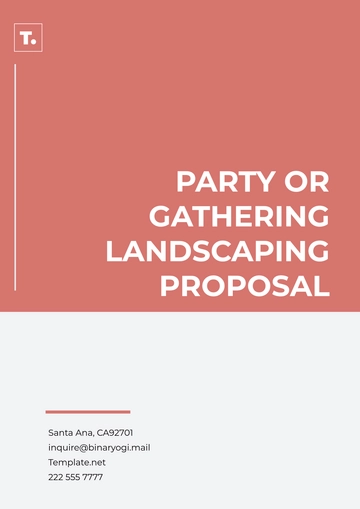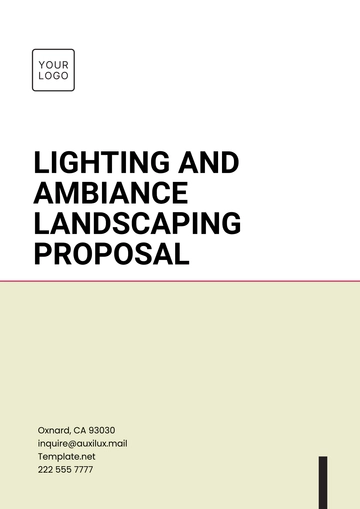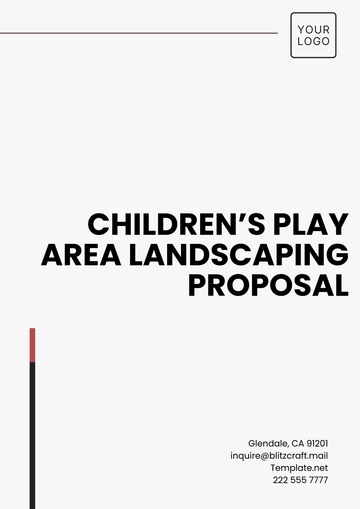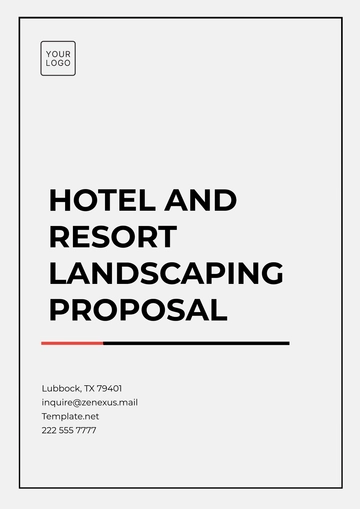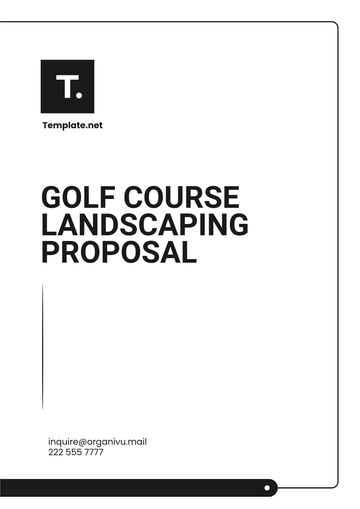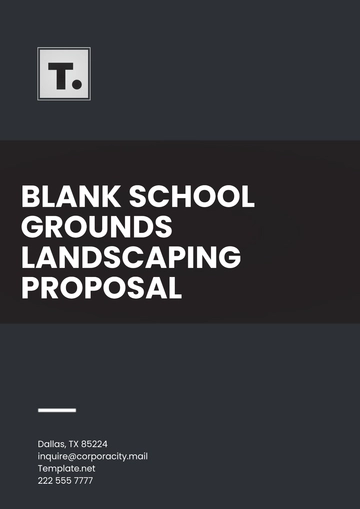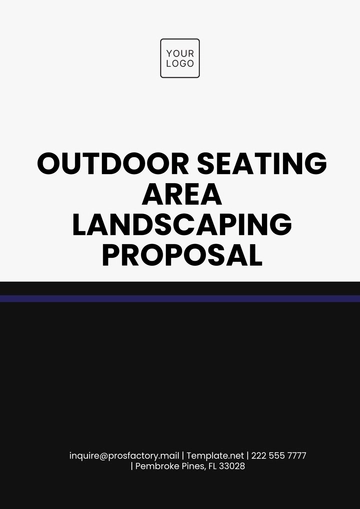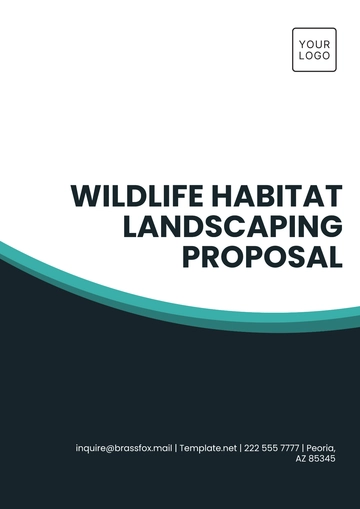Free Wildlife Habitat Landscaping Proposal
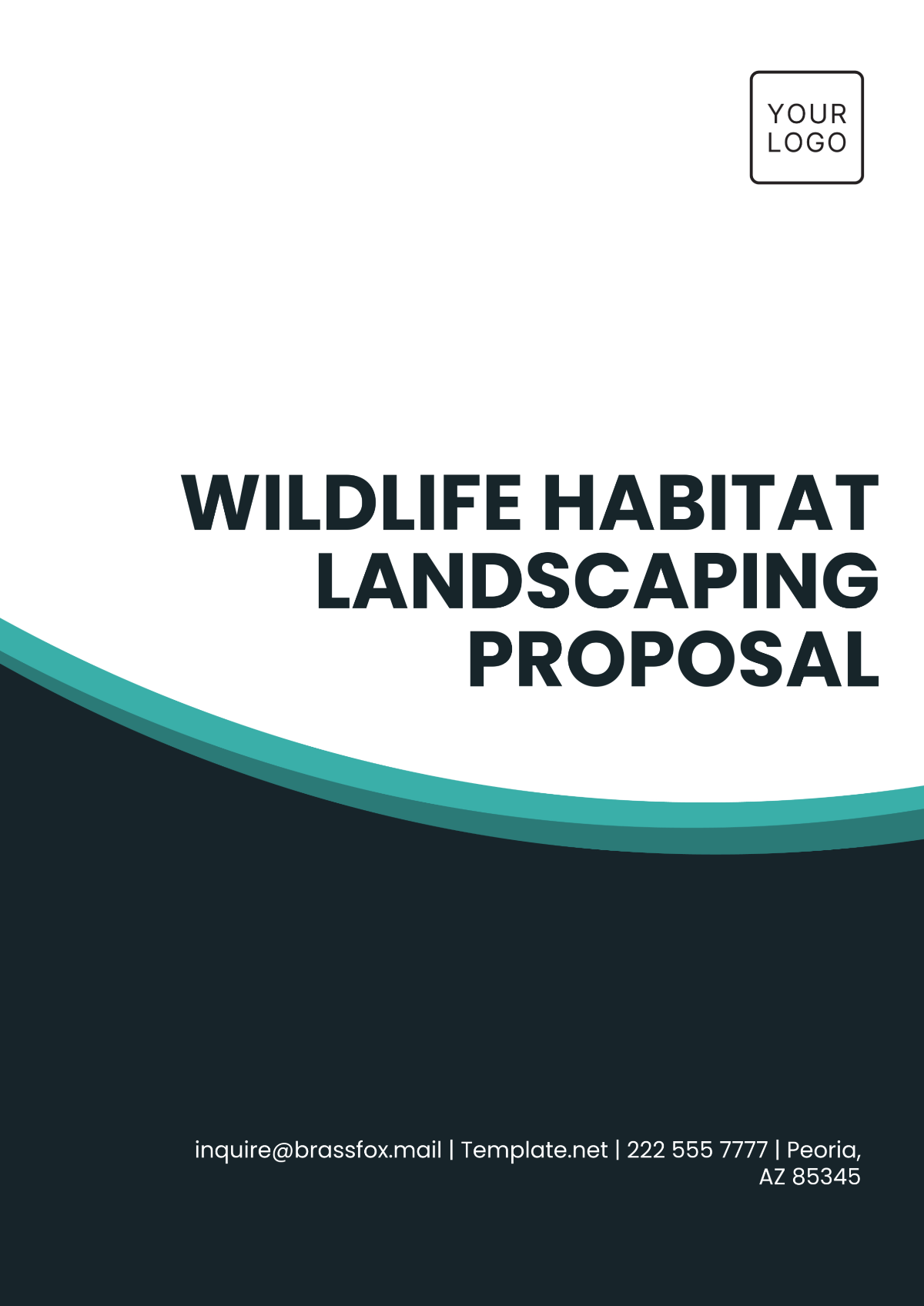
Prepared by: [Your Name]
Date: [Date]
I. Introduction
This proposal outlines a comprehensive plan to create a wildlife-friendly landscape that will enhance local biodiversity and support the needs of various wildlife species. The project will focus on transforming the current landscape into an area rich with native plants, water features, and shelters, fostering an environment where wildlife can thrive.
II. Site Analysis
A. Current Landscape Assessment
The current site is primarily made up of non-native grass, small patches of shrubs, and an unused open space. The area has limited food sources and shelter options for local wildlife, such as birds, insects, and small mammals.
B. Local Wildlife
The site is situated in an area where common species such as birds, bees, butterflies, and small mammals are found. However, these species have limited resources in the area, which the proposal seeks to address by creating a more supportive environment.
C. Environmental Factors
The site experiences moderate rainfall and is subject to varying levels of sunlight throughout the year. The soil is rich but could benefit from improved water retention, which will be addressed through strategic plant selection and irrigation techniques.
III. Proposed Design
A. Plant Selection
The landscaping will feature a variety of native plants, including flowering plants to attract pollinators like bees and butterflies, shrubs to provide shelter, and trees to offer both food and nesting sites for birds and small mammals.
B. Wildlife Features
Birdhouses and Bat Boxes: Strategic placement of birdhouses and bat boxes to encourage nesting and shelter for local species.
Pond or Water Feature: A small pond or birdbath will be added to provide a water source for wildlife, attracting species such as frogs, insects, and birds.
Insect Hotels: Small wooden structures with natural materials will be placed in sheltered areas to support beneficial insects like bees and ladybugs.
C. Pathways and Shelters
Walking paths will be created with natural materials, designed to minimize disruption to wildlife. Sheltered areas will be included where animals can find refuge from predators and extreme weather.
IV. Implementation Plan
A. Timeline
Phase 1: Site Preparation (2 weeks) – Clearing and prepping the land for planting and installation of features.
Phase 2: Planting and Feature Installation (4 weeks) – Planting native species and setting up wildlife features such as birdhouses, ponds, and insect hotels.
Phase 3: Final Touches and Maintenance Plan (1 week) – Ensuring everything is properly installed and laying out a plan for future care and monitoring.
B. Budget
Site Preparation: $1,000
Plants and Landscaping Materials: $2,500
Wildlife Features (birdhouses, pond, insect hotels): $1,000
Labor: $1,500
Miscellaneous (tools, fertilizers): $500
Total Estimated Budget: $6,500
V. Environmental Impact
This project will enhance the local environment by:
Increasing biodiversity by providing food, shelter, and water sources for a variety of wildlife species.
Promoting the health of pollinators like bees and butterflies, which are crucial to local ecosystems.
Reducing soil erosion and improving water retention through the addition of native plants and ground cover.
Offering educational and recreational opportunities for local communities to learn about wildlife conservation.
VI. Conclusion
This proposal outlines a well-researched plan to transform the current landscape into a thriving wildlife habitat. By integrating native plants and wildlife features, we aim to provide a sustainable and supportive environment for local wildlife. We are confident that this project will not only benefit the ecosystem but also raise awareness of the importance of conservation in urban and suburban areas.
- 100% Customizable, free editor
- Access 1 Million+ Templates, photo’s & graphics
- Download or share as a template
- Click and replace photos, graphics, text, backgrounds
- Resize, crop, AI write & more
- Access advanced editor
Design a unique proposal for wildlife habitat landscaping with Template.net’s Wildlife Habitat Landscaping Proposal Template. Customizable and editable, this template allows you to present conservation-friendly designs, native plant selections, and animal-friendly features. Easily tailor your proposal to your client’s goals and specifications with our Ai Editor Tool, ensuring an eco-conscious and personalized solution.
You may also like
- Business Proposal
- Research Proposal
- Proposal Request
- Project Proposal
- Grant Proposal
- Photography Proposal
- Job Proposal
- Budget Proposal
- Marketing Proposal
- Branding Proposal
- Advertising Proposal
- Sales Proposal
- Startup Proposal
- Event Proposal
- Creative Proposal
- Restaurant Proposal
- Blank Proposal
- One Page Proposal
- Proposal Report
- IT Proposal
- Non Profit Proposal
- Training Proposal
- Construction Proposal
- School Proposal
- Cleaning Proposal
- Contract Proposal
- HR Proposal
- Travel Agency Proposal
- Small Business Proposal
- Investment Proposal
- Bid Proposal
- Retail Business Proposal
- Sponsorship Proposal
- Academic Proposal
- Partnership Proposal
- Work Proposal
- Agency Proposal
- University Proposal
- Accounting Proposal
- Real Estate Proposal
- Hotel Proposal
- Product Proposal
- Advertising Agency Proposal
- Development Proposal
- Loan Proposal
- Website Proposal
- Nursing Home Proposal
- Financial Proposal
- Salon Proposal
- Freelancer Proposal
- Funding Proposal
- Work from Home Proposal
- Company Proposal
- Consulting Proposal
- Educational Proposal
- Construction Bid Proposal
- Interior Design Proposal
- New Product Proposal
- Sports Proposal
- Corporate Proposal
- Food Proposal
- Property Proposal
- Maintenance Proposal
- Purchase Proposal
- Rental Proposal
- Recruitment Proposal
- Social Media Proposal
- Travel Proposal
- Trip Proposal
- Software Proposal
- Conference Proposal
- Graphic Design Proposal
- Law Firm Proposal
- Medical Proposal
- Music Proposal
- Pricing Proposal
- SEO Proposal
- Strategy Proposal
- Technical Proposal
- Coaching Proposal
- Ecommerce Proposal
- Fundraising Proposal
- Landscaping Proposal
- Charity Proposal
- Contractor Proposal
- Exhibition Proposal
- Art Proposal
- Mobile Proposal
- Equipment Proposal
- Student Proposal
- Engineering Proposal
- Business Proposal
